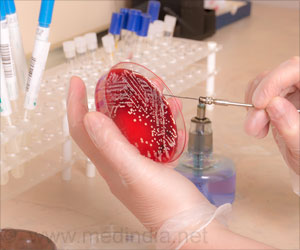The New Delhi 'superbug' that spreads in hospital settings and is resistant to all available antibiotics can be prevented by blocking protein.

‘Blocking a protein called SdrC can prevent bacteria from growing as biofilm and attaching to surfaces.’





A 70-year-old American woman, who came to India for hip replacement last year, died of NDM-1 infection in the US. Her infection was resistant to all the available antibiotics, raising major concerns in the global health community. Medical devices are routinely used in modern medicine to prevent and treat illnesses and diseases but their use is compromised when an accumulation of bacteria called "biofilms" attach to the device surface after it is implanted in the human body.
Communities of these bacteria called "staphylococci" grow on catheters, heart valves and artificial joints and avoid being killed by antibiotics and the human immune system.
The research team led by Dr Joan Geoghegan, Assistant Professor of Microbiology at Trinity's School of Genetics and Microbiology, is studying new ways to prevent medical device-related infection.
A recent breakthrough, published in the prestigious journal Proceedings of the National Academy of Sciences, shows that it is possible to prevent communities of staphylococci from forming by targeting the linkages that hold the bacteria together.
Advertisement
The target of the molecule was a protein attached to the surface of the bacteria called SdrC.
Advertisement
"These new findings show that it is possible to stop bacteria from building communities using molecules that specifically target proteins attached to the surface of the bacteria," Dr Geoghegan added.
By 2050, antibiotic resistance will kill 10 million people worldwide, said a latest Centers for Disease Control and Prevention (CDC) Atlanta report. India is the largest consumer of antibiotics in the world.
"This exciting breakthrough will inform the design of new, targeted approaches to prevent biofilm formation by staphylococci and reduce the incidence of medical device-related infection," Dr Geoghegan added.
Source-IANS









